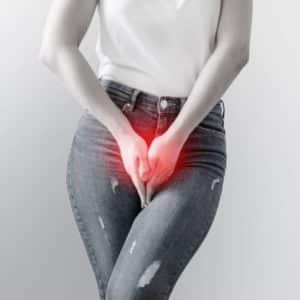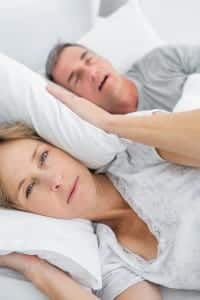What Are the Main Causes of Stress Incontinence?

Medical Cause
Stress incontinence happens because of the weakening of the muscles around the bladder to hold back urine.
The urinary sphincter and other muscles around the pelvic floor can usually retain urine as the bladder expands. If they weaken, any pressure put on them with the exertion of the pelvic or even abdominal muscles will sometimes cause involuntary urination.
Symptoms
Certain large-scale activities like lifting heavy objects, exercising or even just bending over can make a person prone to loss of bladder control from stress incontinence. Involuntary actions like coughing, laughing or sneezing can also strain the pelvic floor muscles, leading to involuntary urination.
These actions won’t always result in incontinence, especially if the bladder is empty. If you regularly urinate involuntarily, you should see a doctor.
Causes
There may be some physiological causes that are more likely to result in incontinence, including one’s advanced age or being overweight.
Likewise, surgeries around one’s pelvis will weaken the surrounding muscles and pose a risk of bringing about incontinence.
The increased risk is true for men, especially with enlarged prostates or after prostate surgery, or with women after they give birth via the birth canal. Moreover, women who gave birth with the help of forceps have a higher chance of incontinence, but not all other procedures will see this increased likelihood.
Chronic coughing, or anything that will cause such coughing such as cigarette smoke, will also exacerbate incontinence because it strains the pelvic floor muscles in a frequent, harsh way.
Associated Risks
Incontinence by itself can have lots of causes but is not usually harmful. It can, however, cause skin rashes or other irritation. That is bad for the skin, and you should treat it quickly. It may also be emotionally taxing.
Solutions
If you’re concerned with instances of stress incontinence or have these symptoms, schedule an appointment now. Anyone in the Chattanooga area can reach out to UT Urology at 423-778-5910 or online at uturology.com.

 Many adults, especially women, have had at least one urinary tract infection or know someone who has. This infection occurs from an overgrowth of bacteria in urine. Because the urethra, the tube through which urine passes, is shorter in women, we see more cases affecting them than men. In most cases, a UTI affects the bladder. There is a chance that the infection could affect the kidneys. Proper treatment is necessary as quickly as possible to prevent kidney infection and restore comfort. Here, we discuss what parents should know about UTIs and how to spot signs of this
Many adults, especially women, have had at least one urinary tract infection or know someone who has. This infection occurs from an overgrowth of bacteria in urine. Because the urethra, the tube through which urine passes, is shorter in women, we see more cases affecting them than men. In most cases, a UTI affects the bladder. There is a chance that the infection could affect the kidneys. Proper treatment is necessary as quickly as possible to prevent kidney infection and restore comfort. Here, we discuss what parents should know about UTIs and how to spot signs of this  Millions of women are affected by urinary incontinence at some point in their lives. This problem seems to most commonly affect women over the age of 50. Research has discovered several interesting facts about urinary incontinence. Perhaps the most fascinating one is that most women who experience symptoms of this condition never see a doctor to find out why or what they can do about it. Here, we discuss what
Millions of women are affected by urinary incontinence at some point in their lives. This problem seems to most commonly affect women over the age of 50. Research has discovered several interesting facts about urinary incontinence. Perhaps the most fascinating one is that most women who experience symptoms of this condition never see a doctor to find out why or what they can do about it. Here, we discuss what  We begin by noting that many patients who get up frequently at night do so because they make too much urine at night. The bladder is simply filling up more quickly than it should. Normally for young people, no more than 20% of your daily urine production should come while you are asleep. In older patients, less than 33% is more normal. Patients who exceed this are said to have nocturnal polyuria, meaning they make too much urine at night. This is easily diagnosed by having patients keep a diary for several nights to measure how much urine they make during the night compared to the day.
We begin by noting that many patients who get up frequently at night do so because they make too much urine at night. The bladder is simply filling up more quickly than it should. Normally for young people, no more than 20% of your daily urine production should come while you are asleep. In older patients, less than 33% is more normal. Patients who exceed this are said to have nocturnal polyuria, meaning they make too much urine at night. This is easily diagnosed by having patients keep a diary for several nights to measure how much urine they make during the night compared to the day. A recent review article by
A recent review article by  Some of the situations in which urodynamic testing may be recommended include:
Some of the situations in which urodynamic testing may be recommended include:
